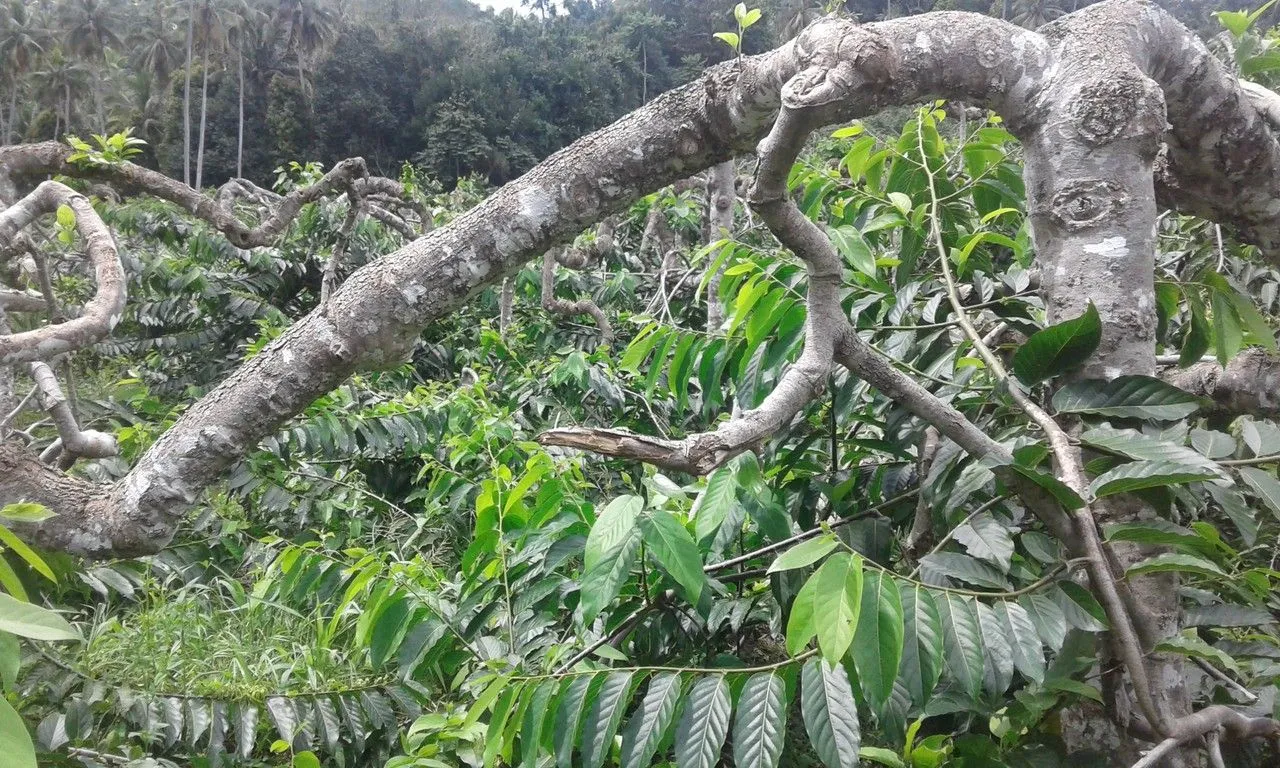
Author: (Lam.) Hook.f. & Thomson
Bibliography: Fl. Ind. 1: 130 (1855)
Year: 1855
Status: accepted
Rank: species
Genus: Cananga
Vegetable: False
Observations: Indo-China to Queensland
The Macassar oiltree, scientifically known as Cananga odorata, is a remarkable plant valued for its highly fragrant flowers and essential oils. Belonging to the Annonaceae family, this tree has been detailed in the historical botanical literature “Flora Indica” as early as 1855. Authored by eminent botanists Jean-Baptiste Lamark and further described by Sir Joseph Dalton Hooker and Thomas Thomson, the Macassar oiltree has captured the interest of botanists and horticulturists alike.
Indigenous to a vast region spanning from Indo-China to Queensland, this versatile tree thrives in tropical climates. Its lush, green foliage and prominent presence in various landscapes make it a notable species in the areas it inhabits. The tree’s flowers, which are yellow-green and highly aromatic, are the source of ylang-ylang essential oil, an ingredient cherished in perfumery and aromatherapy for its rich, sweet scent.
Cultivation of Cananga odorata is common in gardens and plantations within its native range due to the economic value of its essential oil. Flowers are typically harvested in the early morning, when their oil content is highest, and then distilled to extract the essential oils. This process captures the essence of the fragrant blooms, producing a product that is highly sought after in various commercial sectors.
The Macassar oiltree is not merely a utilitarian plant but also holds cultural significance in many regions. Its flowers are often used in traditional ceremonies and rituals, symbolizing different cultural beliefs and practices across Southeast Asia and the Pacific.
In summary, the Macassar oiltree (Cananga odorata) stands out not only for its aromatic allure but also as a significant botanical and cultural entity. Its geographic distribution from Indo-China to Queensland underscores its adaptability and prominence in tropical landscapes. This tree continues to contribute both to the natural beauty of the regions it grows in and to the fields of perfumery and traditional medicine.
Eng: macassar oiltree, ilang-ilang, perfumetree, woolly-pine, ylang-ylang, ylang-ylang-tree, cananga tree
Deu: ylang-ylangbaum
Spa: cadmia, cananga, ilang-ilang
Fra: canang odorant, ilang-ilang
Por: cananga, ylang-ylang, árvore-perfume
Swe: ilang-ilang
Ton: mohokoi
Smo: moso‘oi
Ind: kenanga
Tha: kradangnga
En: Macassar oiltree, Ilang-ilang, Perfumetree, Woolly-pine, Ylang-ylang, Ylang-ylang-tree, Cananga tree, Perfume tree
Fr: Canang odorant, Ilang-ilang
De: Ylang-Ylangbaum
Id: Kenanga
Pt: Cananga, Ylang-ylang, Árvore-perfume
Sm: Moso‘oi
Es: Cadmia, Cananga, Ilang-ilang
Sv: Ilang-ilang
Th: Kradangnga
To: Mohokoi
Taken May 30, 2021 by pratiwir pratiwir (cc-by-sa)
Taken Dec 8, 2002 by Masun Hilya (cc-by-sa)
Taken Aug 29, 2021 by aleen23 (cc-by-sa)
Taken Jan 20, 2021 by lingam (cc-by-sa)
Taken Jan 25, 2020 by Chee Keong Chan (cc-by-sa)
Taken Jun 1, 2014 by Thomas Delhotal (cc-by-sa)
Taken Mar 3, 2020 by Emmanuel GIFFARD (cc-by-sa)
Taken May 1, 2012 by Tela Botanica − Mathilde BERTINELLI (cc-by-sa)
Taken Jan 29, 2020 by Chee Keong Chan (cc-by-sa)
Taken Sep 17, 2020 by Pascal M (cc-by-sa)
Taken Dec 29, 2019 by delile gilles (cc-by-sa)
Taken Oct 19, 2020 by soi10 (cc-by-sa)
Taken Nov 14, 2019 by maxime Garcia (cc-by-sa)
Taken Apr 28, 2021 by Marie Legau (cc-by-sa)
Taken Sep 27, 2020 by Allaoui A. Ahamadi (cc-by-sa)
Taken Jan 29, 2020 by Chee Keong Chan (cc-by-sa)
Taken Aug 21, 2017 by Tela Botanica − Anziz AHMED ABDOU (cc-by-sa)
Taken Aug 21, 2017 by Tela Botanica − Anziz AHMED ABDOU (cc-by-sa)
Taken Aug 21, 2017 by Tela Botanica − Anziz AHMED ABDOU (cc-by-sa)
Taken Aug 21, 2017 by Tela Botanica − Anziz AHMED ABDOU (cc-by-sa)
Taken Nov 18, 2022 by olivia frassanito (cc-by-sa)
Taken Jan 12, 2021 by pratiwir pratiwir (cc-by-sa)
Taken Aug 21, 2017 by Tela Botanica − Anziz AHMED ABDOU (cc-by-sa)
Taken Aug 21, 2017 by Tela Botanica − Anziz AHMED ABDOU (cc-by-sa)
Taken Aug 21, 2017 by Tela Botanica − Anziz AHMED ABDOU (cc-by-sa)
Taken Mar 6, 2013 by Daniel Barthelemy (cc-by-nc)
Taken May 7, 2019 by Marzanna Bug (cc-by-sa)
© copyright of the Board of Trustees of the Royal Botanic Gardens, Kew.
© copyright of the Board of Trustees of the Royal Botanic Gardens, Kew.
© copyright of the Board of Trustees of the Royal Botanic Gardens, Kew.
Growth habit>: Shrub, Tree
Family: Myrtaceae Author: (F.Muell.) K.D.Hill & L.A.S.Johnson Bibliography: Telopea 6: 402 (1995) Year: 1995 Status:…
Family: Rubiaceae Author: Pierre ex A.Froehner Bibliography: Notizbl. Bot. Gart. Berlin-Dahlem 1: 237 (1897) Year:…
Family: Sapindaceae Author: Koidz. Bibliography: J. Coll. Sci. Imp. Univ. Tokyo 32(1): 38 (1911) Year:…
Family: Asteraceae Author: A.Gray Bibliography: Pacif. Railr. Rep.: 107 (1857) Year: 1857 Status: accepted Rank:…
Family: Fabaceae Author: Medik. Bibliography: Vorles. Churpfälz. Phys.-Ökon. Ges. 2: 398 (1787) Year: 1787 Status:…
Family: Aspleniaceae Author: (Cav.) Alston Bibliography: Bull. Misc. Inform. Kew 1932: 309 (1932) Year: 1932…